I remember seeing ships moored in rows, and for want of space, some of them were forced to anchor a mile and a half from the naval port, near the Avalanche Creek bridge. Now, except the mail ships that stop twice a month and the steamers of the River Transport Company, the port is almost empty.
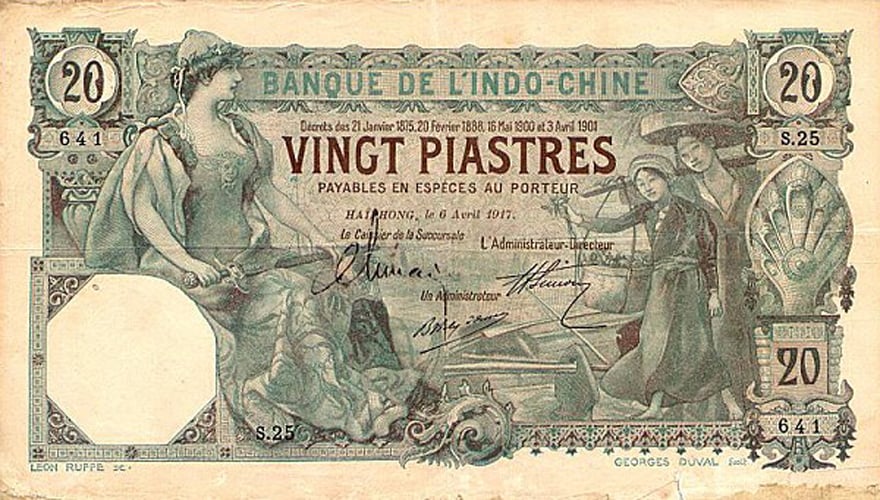
Indochina silver coin
The port is only as busy as it once was for two or three months each year, during the rice export season. So European visitors, if not warned, might mistake it for one of the busiest shipping ports in the Far East. But by the end of July, ships are scarcer and scarcer. The port is deserted again.
What caused this change? All those I asked told me: new customs tariffs wiped out the port overnight; then came the exorbitant and excessive fees: lighthouse fees, mooring fees, pilotage fees, and maintenance fees, which increased even though dredging of reefs blocking the canal had long since made the role of the pilot vanish.
The river was unobstructed. All the dangers lay at sea, about two miles offshore. There were long stretches of shoals that worried unfamiliar captains. But the pilots, who were proper Saigon River pilots, did not go beyond Vung Tau and left the newcomers to their own devices. Finally, and as if adding fuel to the fire, it was the devaluation of the currency and the sudden devaluation of the Indochinese piastre that turned the economic situation of the country upside down.
Oh! The devaluation of the piastre! Here, people talk about nothing else but it. It appears everywhere, it is the answer to every question. Are you surprised to see the hotel owner charge more? - "The piastre has depreciated, sir!". The waiter insists on asking you for more money? - The piastre again, the piastre still.
The currency was devalued, the colony had a lot of work to do to earn enough money to pay; the government was forced to apply harsh measures. And decrees followed one after another, increasing old taxes or imposing new ones: compulsory stamping of documents signed by natives, although previously only a signature was required to be valid; increased taxes on timber exploitation and export; draft of a new rice export tax…, but these measures were not necessarily to revive stagnant business.
Finally, the Decree of December 30, 1894, issued a tax on… postage stamps. Since January 1, the price of stamps has increased by about 60%. A letter sent to France, which yesterday cost only 5 cents, will cost 8 cents the next day. The strangest thing is that the stamp numbered 25 will from now on be sold for 8 cents! The stamp numbered 15 will also sell for 8 cents and so on until the end of the series.
It would be less confusing if France followed the example of Britain, applying in its colonies in the East Sea the use of Indochinese piastres and inserting a special stamp with prices calculated in fractions of Indochinese piastres instead of in centimeters.
At first, it didn't work very well. When the Mexican dollar or the Japanese yen, which are the current currencies, were at par, it was easy for the public to understand that our 5-cent coin, or cent, was equivalent to 1 cent. But now everything is confusing. It's impossible to distinguish between these contradictory figures.
Buying stamps in Indochina is a long and arduous task. The unfortunate staff have to struggle with the new bars, and the public is impatient at the counters. Therefore, at a recent session, the Colonial Council strongly opposed this decree; a decree, announced by telegram on 31 December to come into force on 1 January, seems to me to be flouting the conventions of the Postal Union and the Berne Office.
Worst of all, the devaluation does not seem to be stopping anytime soon. Indeed, it has been announced that the British government has just approved an agreement between the Chartered Bank of Australia and China, the Hong Kong and Shanghai Corporation and Monnaie de Bombay, under which Monnaie de Bombay will be allowed to strike 4 million dollars in special style (British dollars), but with a value equal to Japanese yen. With this new source of money, the Indochinese piastre will soon fall from its current value of 2 fr. 50 to 2 fr and even lower.
It is true that the Treasury [Treasury Office] is maintaining a strange and completely illusory exchange rate. For the Treasury and the Treasury alone, the Indochinese piastre is still worth 2 fr. 70. This is the exchange rate used to pay civil servants' salaries.
But when the man who had just received money at the rate of 2 fr. 70 at counter A went to counter B to send it to France, he was asked, in addition to the postage, for a 6% difference between the Treasury rate and the commercial rate. The officers and soldiers of the army and navy, whose salaries were calculated in francs, should have been entitled to the difference. But no; the absurd exchange rate applied by the Treasury cost them about 5.5% of the money they would have received in France.
There is more. For the native soldiers [Annamese trainees], the rate of the Indochinese piastre was maintained at 4 francs! So a man with a salary of 20 francs did not receive the equivalent of the current rate, that is, 8 Indochinese piastres, but only 5 piastres. And people would reply arrogantly that the increase in the standard of living of the natives was negligible.
Indeed, many people have complained about this discrimination. (continued)
* (Nguyen Quang Dieu quoted from the book Around Asia: Cochinchina, Central Vietnam, and North Vietnam , translated by Hoang Thi Hang and Bui Thi He, AlphaBooks - National Archives Center I and Dan Tri Publishing House published in July 2024)
Source: https://thanhnien.vn/du-ky-viet-nam-dong-dong-duong-ha-gia-18524120522554396.htm




![[Photo] Hanoi morning of October 1: Prolonged flooding, people wade to work](https://vphoto.vietnam.vn/thumb/1200x675/vietnam/resource/IMAGE/2025/10/1/189be28938e3493fa26b2938efa2059e)



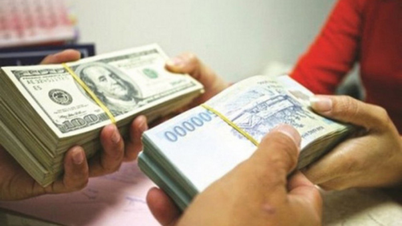

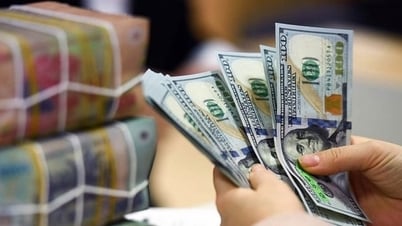
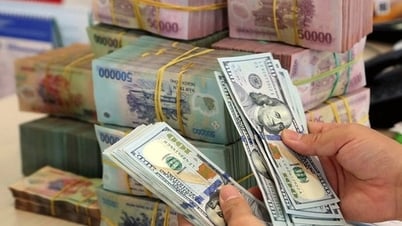
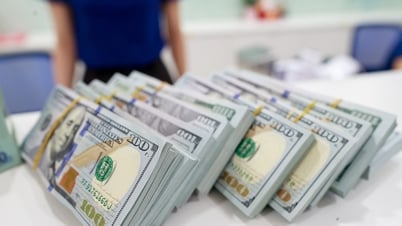


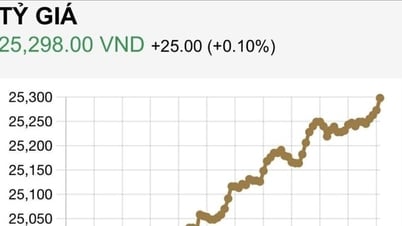








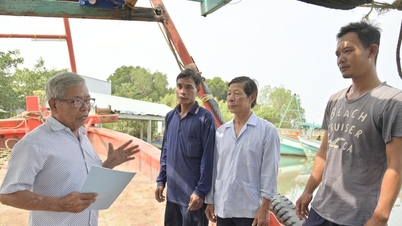






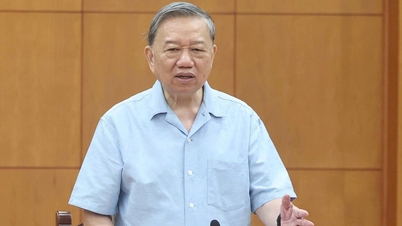





![[Photo] Panorama of the cable-stayed bridge, the final bottleneck of the Ben Luc-Long Thanh expressway](https://vphoto.vietnam.vn/thumb/1200x675/vietnam/resource/IMAGE/2025/9/30/391fdf21025541d6b2f092e49a17243f)
![[Photo] The 1st Congress of Phu Tho Provincial Party Committee, term 2025-2030](https://vphoto.vietnam.vn/thumb/1200x675/vietnam/resource/IMAGE/2025/9/30/1507da06216649bba8a1ce6251816820)
![[Photo] President Luong Cuong receives President of the Cuban National Assembly Esteban Lazo Hernandez](https://vphoto.vietnam.vn/thumb/1200x675/vietnam/resource/IMAGE/2025/9/30/4d38932911c24f6ea1936252bd5427fa)







































![[Megastory] A term of creation: An Giang rises from historical imprints](https://vphoto.vietnam.vn/thumb/402x226/vietnam/resource/IMAGE/2025/10/1/2660ab96e53f4270bcc37f8d39c36c78)



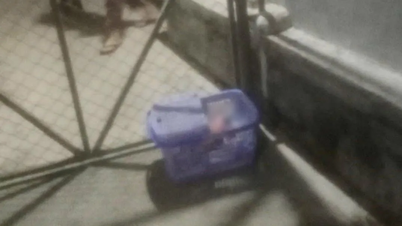















Comment (0)